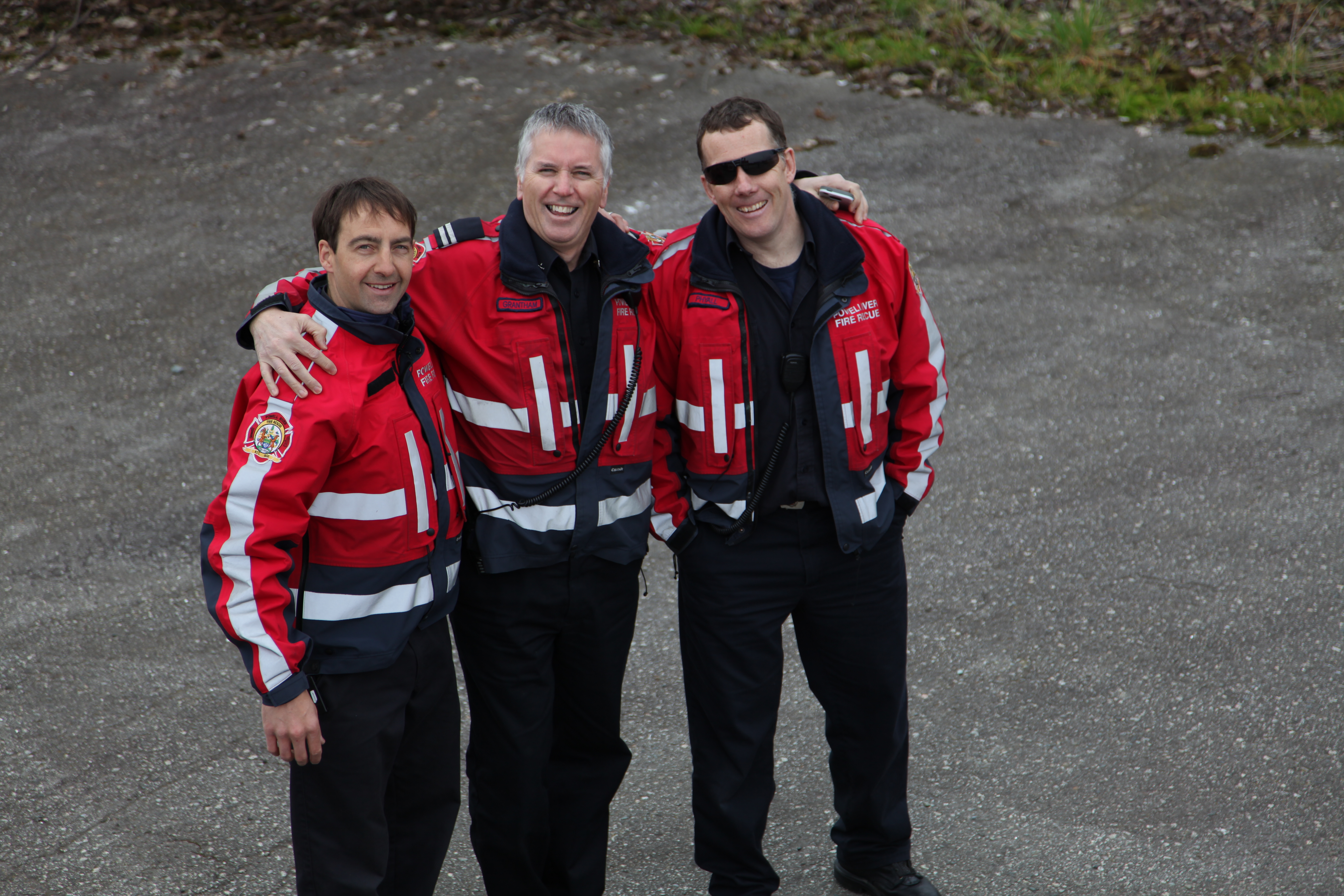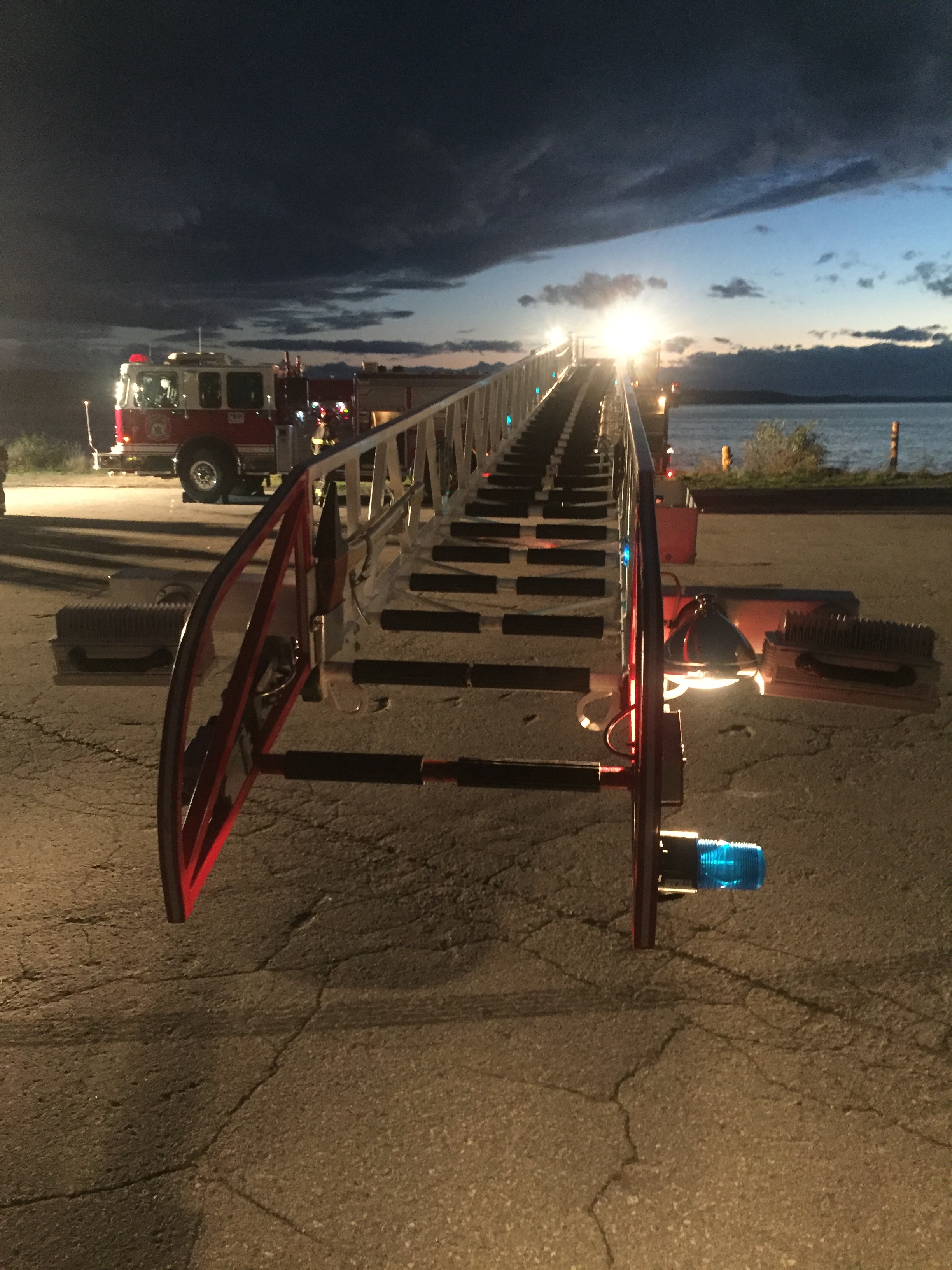Q: What is the impact of crew sizes?

A: A landmark study performed by the National Institute of Standards and Technology in April 2010, showed the differences between crew size and efficiency in their ‘Report on Residential Fireground Field Experiments’
The study found that four-person firefighting crews were able to complete 22 essential firefighting and rescue tasks in a typical residential structure 30 percent faster than two-person crews and 25 percent faster than three-person crews.
Click here to read and see a video explaining the study. The full report can be downloaded at the bottom of the linked page.
A: Fire department staffing has become a hot-button issue for municipal leaders across the country. Given the struggling economy, many municipal and county fire departments, along with their fire protection district brethren, have chosen to reduce staffing to close a their budget gaps…
When these elected officials choose to eliminate firefighters, close stations, shut down apparatus, or in any way increase the workload on firefighters, they are reducing the ability of the fire department to respond effectively and efficiently.
To read the rest of the article and how staffing cuts affect fire departments and you, click here.
Q: The economic impact of firefighting?
A: Communities have long recognized and appreciated firefighters heroic efforts that result in lives and property being saved. Over the years the fire service has developed several methods of measuring how well these goals are achieved, such as response times, lives saved and historically, “fire loss”. These methods of assessment may improve firefighters response tactics, but they fail to recognize the financial benefits provided by departments when they respond quickly and effectively and save businesses.
In a politically complicated, finance-focused environment in which we find ourselves having to defend our budgets, this study that shows that just 3%-5% of the total work firefighters do (fighting fires in commercial buildings) saves communities millions of dollars each year. In other words, our salaries, pensions and overall infrastructure are justified without even considering the other 97% of what the fire department does every day.
The fire service will continue to go about risking our lives to save people and property and we will do it with the same level of passion and humility we have always given. But at a time when the fire service has come under attack by those who try to put a dollar value on what we do, attacking our pensions and salaries and failing to recognize our greater impact to the community, departments have to react and show with accuracy and scientific precision that we provide tremendous, if unnoticed, value. It is time that we bring to light the significant financial impact our efforts have on our communities. It is time to shift our focus from “fire loss” to “what we saved.” …click here to learn about the study and read the whole article.
Q: What determines how much I pay for Fire Insurance?
A: Insurance companies use ‘Fire Insurance Grades’ to determine their capacities for insurance. Fire insurance grades are a measure of the capacity of the community to provide an effective level of response to structure fires (and conflagrations) that can be expected to occur based on the level of fire risk in the built environment. Numerous variables are considered in determining the fire insurance grades but the factors are generally broken down into the five broad categories: risk level; fire department; water supplies; fire safety control (including prevention and education); and emergency communications.
Canada’s system of insurance grades is often misunderstood. To learn more about ‘Fire Insurance Grades’, click here.
Q: What is the advantage to having an immediately responding apparatus?
A: Powell River enjoys first class public safety because of having an immediately responding apparatus. To understand how, let’s take a look on how time factors into an emergency call. There are many “times” to be accounted for in an emergency call. First there is the initial 911 call, the time from the beginning of the incident to when 911 is dialed. Then there is ‘dispatch time’, the time it takes our dispatch centre to gather the information and to notify us of the emergency. There is ‘turnout time’ which is the time it takes when we acknowledge notification of the emergency to when we are en route. This is followed by ‘response time’ which begins when we are en route to the emergency incident and ends when we arrive at the scene. By lowering the times above, you get an increased reduction in human and property loss.
When you call 911 for a fire, your call goes to a primary public safety answering point. From there you are promptly directed to our dispatch centre located in Campbell River. Our dispatch centre abides by the standards laid out in NFPA 1221, where 95% of all alarms received on emergency lines shall be answered within 15 seconds. In addition 90% of emergency alarm processing shall be completed within 64 seconds and 95% of alarm processing shall be completed within 106 seconds. Once notified of the emergency, we strive for a 80 second turnout time for fire and special operations calls and a 60 second turnout time for medical calls (as set out in NFPA 1710) and proceed to being en route to the emergency. This rapid ‘turnout time’ is one advantage of having a staffed first response emergency vehicle.
As you can see in the figure at right presented by NFPA 1710 – A.5.2.1.2.1, the leading authority on fire protection (www.nfpa.org), at about 8 minutes from ignition a fire will extend beyond the room of origin with a substantial increase to life and property loss. Therefore the initial 911 call, plus dispatch time, plus turnout time, plus response time should all be completed before eight minutes. Even a small delay makes the difference between: confining the fire to the room of origin and executing a rescue; to having a total fire loss and carrying out a recovery. NFPA 1710 states “an early aggressive and offensive primary interior attack on a working fire, where feasible, is usually the most effective strategy to reduce the loss of lives and property damage”. NFPA goes on to state, “the ability of adequate fire suppression forces to greatly influence the outcome of a structural fire is undeniable and predictable”.
Q: Why does Powell River need all these emergency vehicles?
A: The current number of fire apparatus allows Powell River to meet the requirement for initial attack response capability for “medium hazard occupancies” (apartment buildings, offices) as deemed in Table 7.2.1 of the 19th Edition NFPA Fire Protection manual.
In addition to hazard classification, the number of fire trucks are determined by a city’s size, and insurance grade rating, which determine how much residents pay for insurance. Other criteria that make up the insurance rating are: number of personnel (both career and auxiliary), training levels, water distribution system, fire truck age and pumping capacity, and a whole host of other things. Ultimately the better prepared a fire department is, the less insurance premiums paid on a residential and/or business property.

Having the right number of apparatus ensures we are able to respond effectively to any emergency in the City of Powell River. This is especially important in our community, where additional resources are not within reasonable responding distances.
Q: If there are only 2 or 3 firefighters initially responding to a fire, is my safety at risk?
A: According to Worksafe BC (www.worksafebc.com) Regulation 31.23 clarified in guideline G 31.23, four is the minimum number of crew required before entering into a smoke filled building with a charged hose line for the initial attack of a fire or to search for occupants. The city of Powell River’s first response unit is staffed with only two, three, sometimes four rescue personnel, making the possibility of delaying a rescue a reality. This situation greatly lessens the chance for survival for any fire or accident victim.
Powell River’s Professional Fire Fighters are seriously concerned for your safety and are lobbying for the staffing standard found in NFPA 1710 -5.2.2 through 5.2.2.1.1. This standard by the National Fire Protection Association (NFPA www.nfpa.org), recommends for safety, effectiveness and efficiency, that a minimum of four on duty personnel shall be staffed on each engine company. Amending the current staffing agreement to achieve this national standard for the initial first response unit will have the greatest effect on improving the public’s life safety, not only in structure fires, but any immediately life threatening rescue (motor vehicle accidents, confined space rescues, etc). To read various studies supporting a four person crew, click here.
Powell River Fire Rescue is a combination department, consisting of both career and auxiliary members. During an emergency call, following behind the first response unit, two off-shift career firefighters respond to Station 1 from their residence to staff the second-in fire apparatus; and a chief responds in the “Duty Chief’s vehicle”. This delayed response of fire apparatus makes a response of 5 to 7 fire personnel total. In addition, an unknown number of auxiliary members respond to the scene from throughout the community, when they are able to.(In the case of Wildwood, auxiliary members respond to Station 2 to staff Engine 43)
The NFPA recommends that 15 personnel respond to a single family house fire. For a garden apartment/strip mall fire, they recommend 28 fire fighters. This is due to the many tasks and responsibilities which need to be taken care of simultaneously. These include, but are not limited to, such roles as: Incident Commander, pump operators, ladder operators, hydrant taker, attack crews, ventilation crews, rescue crews for civilian victims, and rapid intervention teams for the rescue of downed firefighters. Click here for a link to a great explanatory video.
Q: Why does the Fire Department respond to medical calls?
We respond to medical calls for the simple reason that many times the fire apparatus may be closer than the first available ambulance, allowing us to initiate lifesaving treatment before the ambulance arrives. Regardless if the ambulance has arrived before or after we have, we assist with patient care, help package, and carry the patient. Depending on the severity of the illness or trauma, it is not uncommon for a firefighter to help out in the back of the ambulance assisting the paramedic with patient care while in transport to the hospital.
Unit Chief Robert Perry of the BC Ambulance Service (BCAS) states that “The local First Responder Program combines the resources of the Powell River Fire Department and the BC Ambulance Service to maximize the quality of pre-hospital emergency care in our city. It is without a doubt one of the best in the Province and the citizens of Powell River can be proud”
Perry has been a long standing member of the BCAS. He has served as Unit Chief in both Powell River and Courtenay and has since retired.
Dual dispatch to cardiac arrest: can it save lives?
The American Heart Association estimates that there are more than 356,000 out-of-hospital cardiac arrests (OHCA) annually and that about 90 percent are fatal. Reducing response times to OHCAs and ensuring quicker initiation of CPR and defibrillation is critical to saving lives. Click here to read the details of the study.
Q: When doing fire inspections, why do firefighters drive the firetruck and not just have one firefighter go and drive a smaller vehicle?
We drive Rescue 1 when doing fire inspections so that we are able to execute a quick response when a call comes in. Furthermore, having the crew go into the various establishments allows for preplanning, the familiarization of the layout and hazards of the site in the event of an emergency.
